Test: Digestive System (Old NCERT) - Grade 11 MCQ
25 Questions MCQ Test Biology for Grade 11 - Test: Digestive System (Old NCERT)
Which of the following correctly depicts the dental formula of a child?
Read the following statements and select the correct option
Statement 1: Blood sugar level falls rapidly after hepatectomy.
Statement 2: The glycogen of the liver is the principal source of blood sugar in case of an emergency
Statement 2: The glycogen of the liver is the principal source of blood sugar in case of an emergency
| 1 Crore+ students have signed up on EduRev. Have you? Download the App |
Match Column-1 with Column-ll and select the correct option from the codes given below.


What will happen if the secretion of parietal cells of gastric glands is blocked with an inhibitor?
Which one of the following pairs of the kind of cells and their secretion is correctly matched?
The lining of intestinal wall from outside to inside is made up of
Match Column-I with Column-ll and select the correct option from the codes given below.
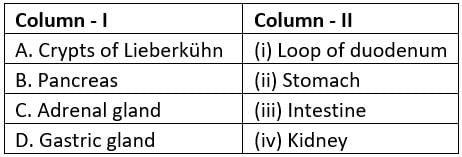
The epithelial cells lining the stomach of vertebrates are protected from damage by HCl because
Glisson's capsules is the characteristic feature of
Match Column-I with Column-II and select the correct option from the codes given below.
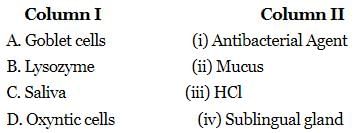
Two friends are eating together at a dining table. One of them suddenly starts coughing while swallowing some food. This coughing would have been due to improper movement of:
Read the following statements and select the correct option
Statement 1 : Dental formula gives the number of teeth in the half of each jaw
Statement 2 : Dental formula can be expressed for insectivorous mammals as well as for the non- mammalian vertebrates
Examine the figure of gastric gland given below and identity the labelled parts A to D.
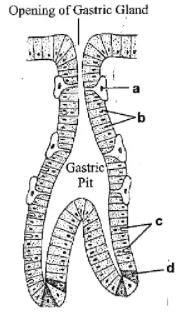
Which of the following statements is incorrect?
The diagram given below represents a section of small intestinal mucosa. Identify A, B and C.
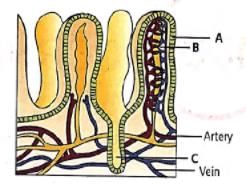
Match column I with column II and select the correct option from the given codes.
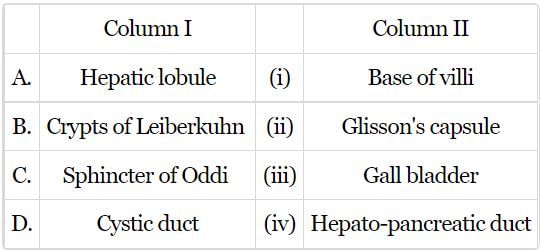
Which of the following statement is incorrect about the pancreas?
The given diagram shows a duct system of liver, gall bladder and pancreas. Write the names of ducts from A to D
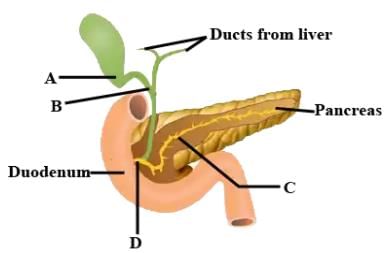
The common bile duct in human is formed by the joining
Which of the following statements is incorrect?
Read the following statement and select the correct option.
Statement 1: The second largest digestive gland in our body's pancreas.
Statement 2 : Pancreas functions both as an exocrine and endocrine gland
In which layer of stomach are gastric glands located?
Read the following statements and select the correct option.
Statement 1 : The worm-like structure attached to the caecum at the beginning of the large intestine is known as vermiform appendix.
Statement 2 : Vermiform appendix has no apparent digestive function.
|
219 videos|306 docs|270 tests
|
|
219 videos|306 docs|270 tests
|

















